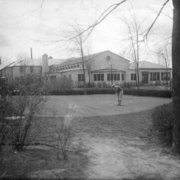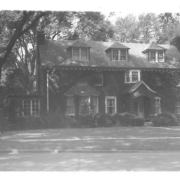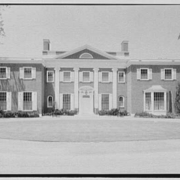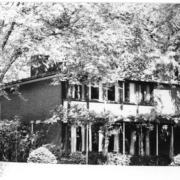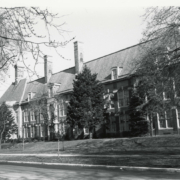Historical Architecture of Grosse Pointe – Lochmoor Golf Course
Last week we presented the story of the original clubhouse at Lochmoor Club. It was designed by William B. Stratton and Dalton J. Snyder, and completed in 1917-1918. It was demolished in 1924, because of a fire and a new clubhouse was built and opened later that year.
This week we continue the story of Lochmoor as we explore the history of the golf course. In 1917, a group of Detroit golf enthusiasts reportedly purchased 135 acres of farmland for the club to be located. When Lochmoor Club opened for play in June 1918, the club received Certificate No. 173 of Active Membership in the United States Golf Association. That same year the clubhouse was completed. Travis Beaupre, John H. Sweeny and the consulting architect Walter J. Travis (three-time U.S. Amateur Golf Champion) designed the original golf course. John H. Sweeney built it. It is reported William Beaupre of the pioneer Grosse Pointe Beaupre family supervised most of the construction. When John H. Sweeney took his morning ride outs on horseback, it is reported that he stopped to consult with Beaupre. These discussions are credited today with Lochmoor’s physical beauty as well as its departure from tradition in such ‘modern’ ideas as eliminating cross fairway traps. Source: Lochmoorclub.com.
The utmost attention was given to the planning of the course that would be regarded as a full championship course. At the time, it was intended the course to be ranked among the best in the country. A main focal point of the design was to ensure that it fitted in well with the surroundings about the clubhouse and the locker room so members could view a great deal of the play on the course from vantage points. With this goal in mind the ninth and eighteenth putting greens were located immediately in front of the club terrace. The practice putting green was located between the locker room and the first tee; thereby ensuring players could practice before matches and not lose too much time.
Many of the holes had at least three tees – Championship, Middle, and Short. This provided flexibility of over eight hundred yards from the courses shortest length to the longest length by use of the different tees. Source and image: Michigan Architect and Engineer, 1920.
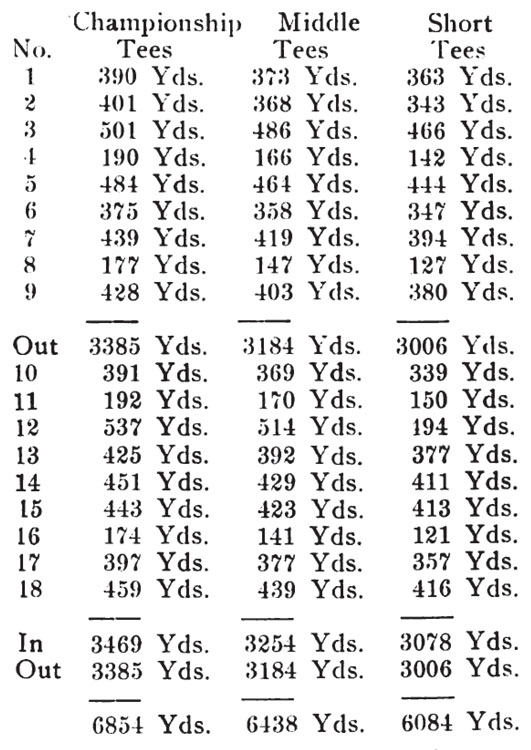
In 1920, the committee in charge decided the course should be refined and improved by constructing additional hazards and bunkers etc. It is reported Charles H. Alison (a British golf course architect) of the firm of Colt, MacKenzie & Alison, (golf architects and experts in landscape) was hired to oversee the changes. The committee believed ‘the results of Charles H. Alison’s work was something that would make the Lochmoor course a real contribution to the golfing fraternity in the district’. Source: Michigan Architect and Engineer, 1920. Charles H. Alison, and his partner Harry Colt, was also responsible for the design of the course at the Country Club of Detroit in 1927, along with a number of prominent courses throughout the United States during the 1920’s – you can read the full story by clicking here. The following images were taken in 1929 – courtesy of: digital.library.wayne.edu.
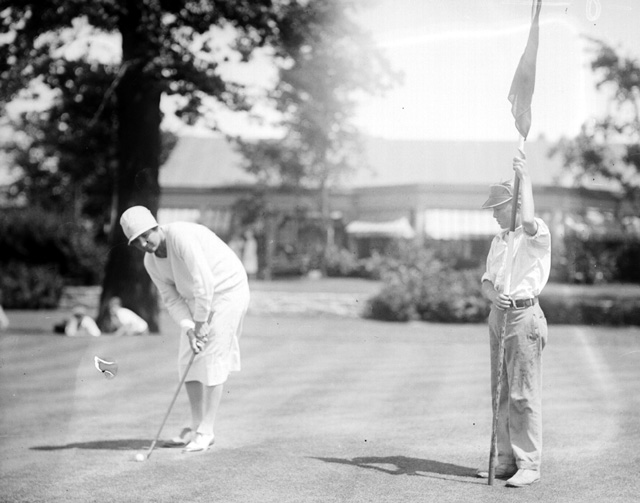
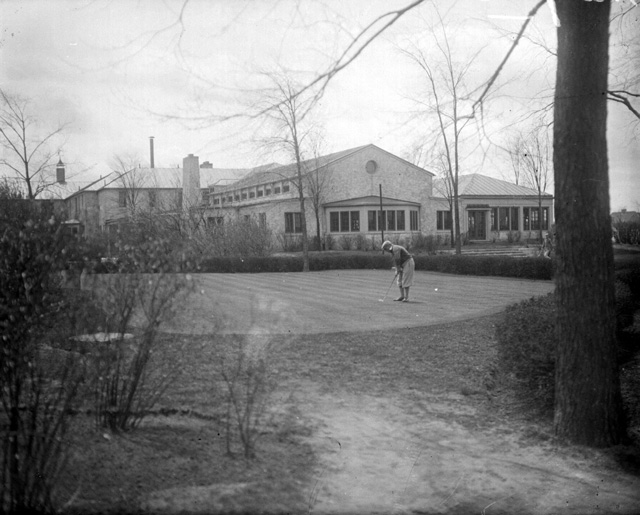

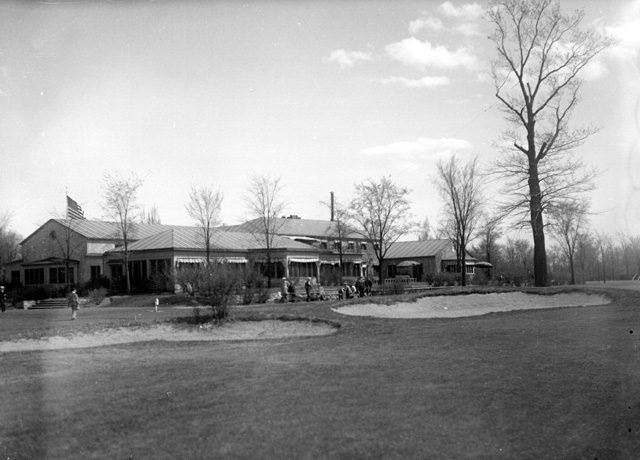
When the club was first organized the number of members, beyond the sixty-seven charter members, grew steadily. It is reported the limit of membership, in 1920, was 400 and that the limit would be adhered to, so that the facilities ‘would not be overtaxed’. Along with the golf course and the interior of the clubhouse it is reported the locker rooms received just as much attention. It was deiced to build as good a locker room as possible. Some of the features included special lockers and add excellent ventilation – a line of ventilators in the roof were positioned the entire length of the building. A lounge was also provided for the men within the locker room. Source and image: Michigan Architect and Engineer, 1920.
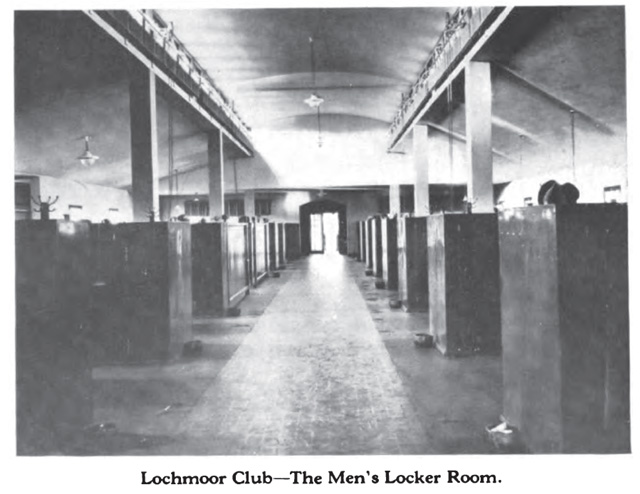
Walter J. Travis, the consulting architect of the Lochmoor golf course, was an amateur golfer during the early 1900’s. He was also a respected golf journalist and publisher, an innovator in all aspects of golf, a teacher, and a golf course architect. He was born in Australia in 1862, and relocated to New York City in 1886. Four years later, having married Anne Bent, he became a citizen of the United States. It appears Walter Travis purchased his first set of golf clubs in 1896. Within a month of taking up the sport and hitting his first shot he won the Oakland Golf Club handicap competition. During the proceeding years he placed second in the U.S. Open Championship (in 1902), and was soon the country’s top amateur golfer, winning the U.S. Amateur Golf Champion three times (1900, 1901, and 1903). He was also the British Amateur Golf Champion in 1904, (the first player from America to win). Walter J. Travis passed in 1927. He was inducted to the World Golf Hall of Fame in 1979.
Over the years the Lochmoor Club golf course has been completely renovated and re-landscaped. During the 1960’s a plan was created to redesign the 128-acre course. ‘This was brought on by the decision to eliminate the Milk River’. The changes also saw over 2,000 trees and shrubs planted to improved the beautification of the course. The following image was taken in 1965 – courtesy of: digital.library.wayne.edu.
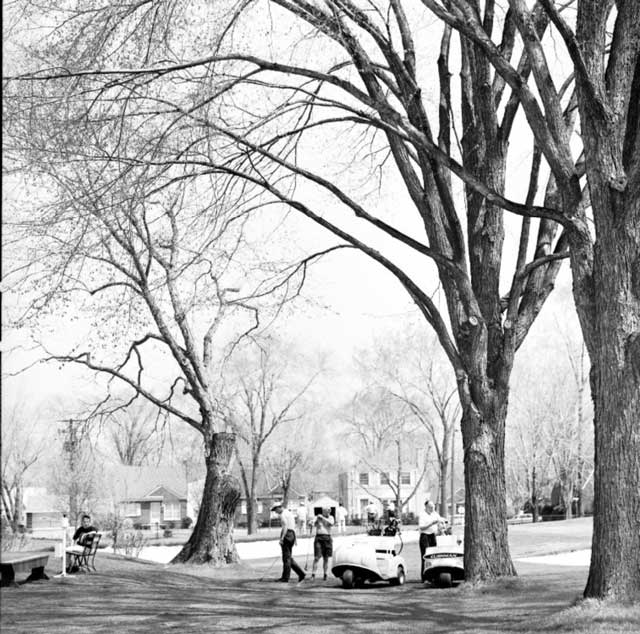
Upgrades to the course continued to be made. This included a total renovation of golf course traps and bunkers, in 1983, and the addition of a drainage system and construction of asphalt cart paths during the latter 1980’s. This was followed by the addition of a major water retention program in the late 1990’s.
Today Lochmoor Club is a popular and modern facility with state-of-the-art equipment and resources for all of its members. This prestigious and historic club has come a long way since the formation of the club, the course, and completion of the original clubhouse between 1917-1918.
*Photos courtesy of the Higbie Maxon Agney archives unless stated.
Written by Katie Doelle
Copyright © 2021 Katie Doelle

